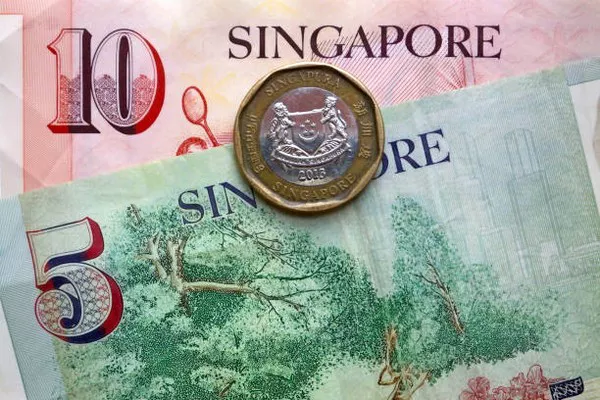In the realm of global finance, currency strength is a crucial indicator of a nation’s economic stability and growth prospects. Among the currencies that attract attention on the international stage is the Singapore dollar (SGD). Renowned for its stability and resilience, the SGD stands as a pillar of Singapore’s economic prowess. In this article, we delve into the factors contributing to the strength of the Singapore dollar, analyzing its performance, stability, and future prospects.
1. Economic Fundamentals and Monetary Policy
Singapore’s Economic Landscape
Singapore, a small island nation nestled in Southeast Asia, has carved out a niche for itself as a global financial hub and a beacon of economic prosperity. Despite its size, Singapore boasts a highly developed and diversified economy, characterized by robust financial services, advanced manufacturing, and a thriving technology sector. The city-state’s strategic location, business-friendly policies, and emphasis on innovation have propelled its economic growth and attracted substantial foreign investment.
Monetary Policy Framework
The Monetary Authority of Singapore (MAS) plays a pivotal role in safeguarding the stability of the Singapore dollar. MAS employs a managed float regime, allowing the SGD to fluctuate within a specified band against a basket of currencies. This approach provides the flexibility necessary to cushion the economy from external shocks while ensuring price stability and sustainable growth.
Underpinning MAS’s monetary policy is a commitment to sound fiscal management, inflation targeting, and exchange rate stability. By employing a blend of monetary tools, including interest rate adjustments and foreign exchange interventions, MAS aims to promote economic stability, support sustainable growth, and maintain the competitiveness of the SGD on the global stage.
2. Fiscal Resilience and Economic Performance
Fiscal Discipline
Singapore’s prudent fiscal policies have been instrumental in bolstering investor confidence and strengthening the SGD. With a reputation for fiscal discipline and transparency, the Singaporean government has managed to maintain healthy fiscal surpluses and low levels of public debt. This fiscal prudence not only enhances the credibility of Singapore’s economic management but also provides a buffer against external shocks and economic downturns.
Economic Performance
The resilience of the Singapore dollar is closely intertwined with the nation’s robust economic performance. Despite facing headwinds such as global trade tensions and the COVID-19 pandemic, Singapore has demonstrated remarkable resilience, supported by its diversified economy, agile policy responses, and strong institutional framework. While economic growth may fluctuate in response to external factors, Singapore’s long-term trajectory remains positive, contributing to the stability and strength of the SGD.
3. Regional Dynamics and Global Standing
Regional Integration
As a key player in the Asia-Pacific region, Singapore’s economic fortunes are intricately linked to regional dynamics. The city-state’s active participation in regional trade agreements, such as the Comprehensive and Progressive Agreement for Trans-Pacific Partnership (CPTPP) and the Regional Comprehensive Economic Partnership (RCEP), underscores its commitment to open markets and economic integration. This regional connectivity not only facilitates trade and investment flows but also enhances the international standing of the Singapore dollar.
Global Recognition
The Singapore dollar enjoys global recognition as a stable and reputable currency, bolstered by the nation’s strong credit ratings and prudent financial management. International investors view the SGD as a safe haven currency, particularly in times of uncertainty or market volatility. Moreover, Singapore’s status as a leading financial center further enhances the visibility and liquidity of the SGD in global markets, reinforcing its status as a strong currency.
4. Outlook and Challenges
Economic Outlook
Looking ahead, the Singapore dollar is poised to maintain its strength, supported by favorable economic fundamentals and proactive policy measures. While uncertainties remain, including geopolitical tensions and the evolving global economic landscape, Singapore’s resilience and adaptability bode well for the stability of the SGD.
Challenges
However, the Singapore dollar is not immune to challenges. External factors such as volatile global markets, fluctuations in commodity prices, and shifts in investor sentiment can impact the currency’s performance. Additionally, domestic factors such as demographic shifts, technological disruptions, and environmental sustainability concerns pose long-term challenges that require careful management.
Conclusion
In conclusion, the Singapore dollar stands as a testament to Singapore’s economic resilience, prudent governance, and commitment to stability. While challenges persist, the fundamental strengths of the SGD, coupled with proactive policy responses, position it as a strong and reliable currency in the global arena.
FAQs
What factors contribute to the strength of the Singapore dollar?
The strength of the Singapore dollar is influenced by various factors, including Singapore’s robust economic fundamentals, sound monetary policy framework, fiscal discipline, and regional integration efforts.
How does the Monetary Authority of Singapore (MAS) manage the Singapore dollar’s exchange rate?
MAS employs a managed float regime, allowing the SGD to fluctuate within a specified band against a basket of currencies. MAS utilizes a range of monetary tools, including interest rate adjustments and foreign exchange interventions, to maintain exchange rate stability.
Why is the Singapore dollar considered a strong currency?
The Singapore dollar is considered a strong currency due to its stability, liquidity, and global recognition. Supported by Singapore’s strong economic fundamentals, prudent fiscal policies, and reputation as a leading financial center, the SGD is regarded as a safe haven currency by international investors.
How does regional integration impact the strength of the Singapore dollar?
Singapore’s active participation in regional trade agreements and economic integration efforts enhances the visibility and liquidity of the SGD in global markets. Regional connectivity facilitates trade and investment flows, reinforcing the strength of the Singapore dollar.
What are the potential challenges facing the Singapore dollar?
While the Singapore dollar remains resilient, it is not immune to challenges. External factors such as geopolitical tensions, global economic uncertainties, and domestic demographic shifts pose risks to the currency’s stability. Proactive policy measures and economic resilience are essential in addressing these challenges.


